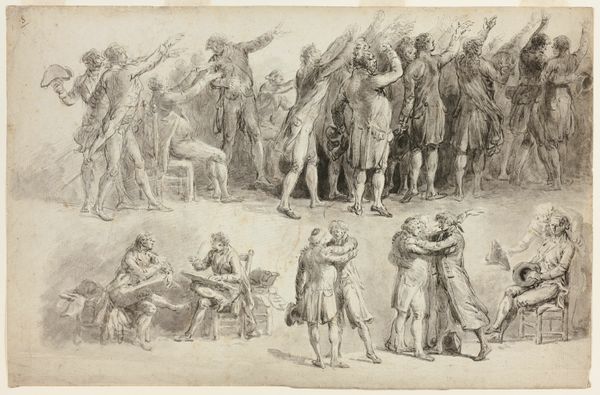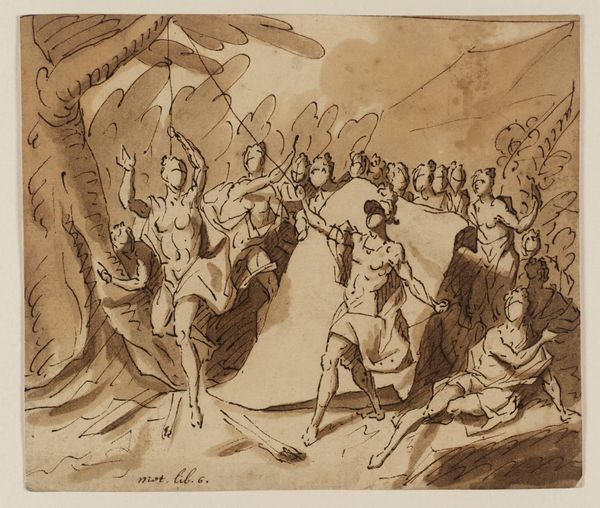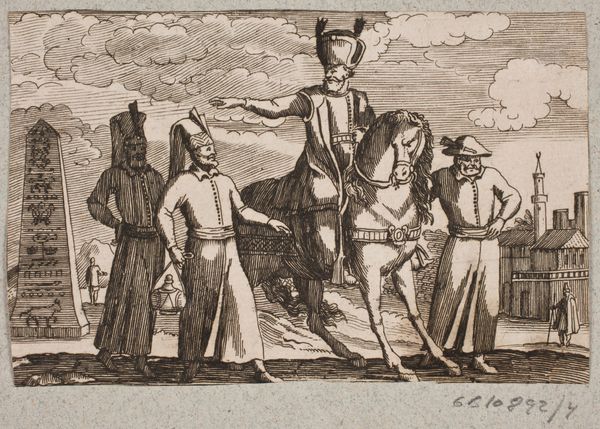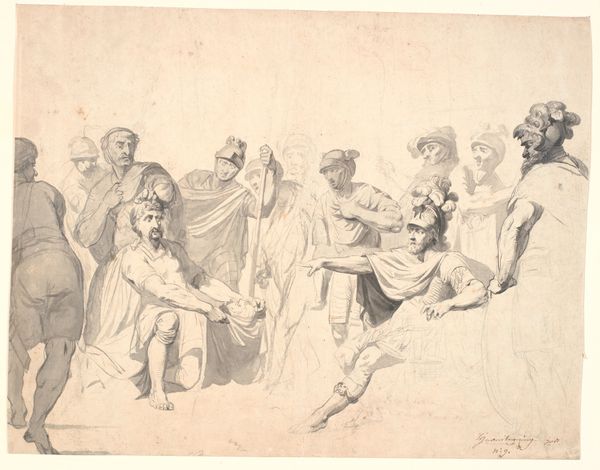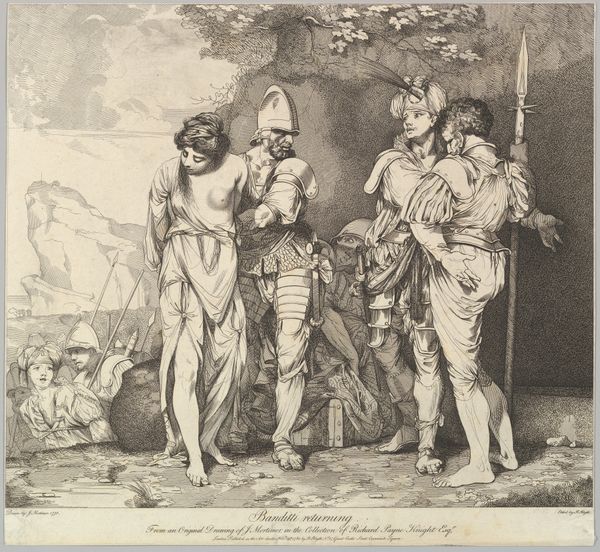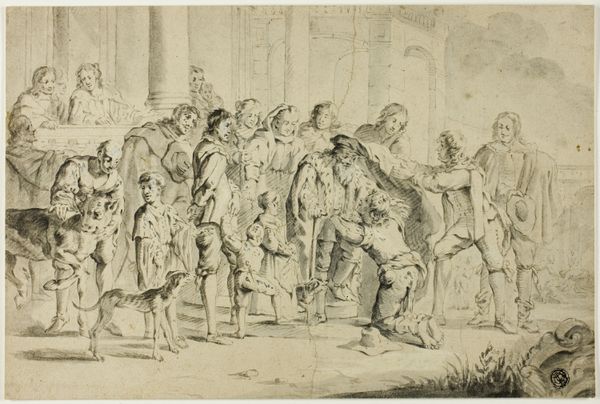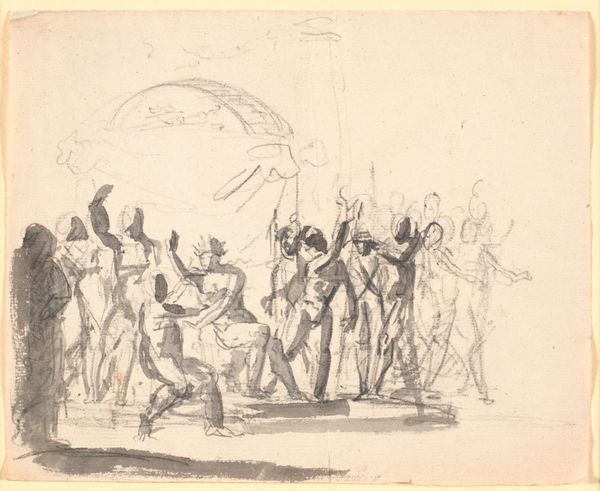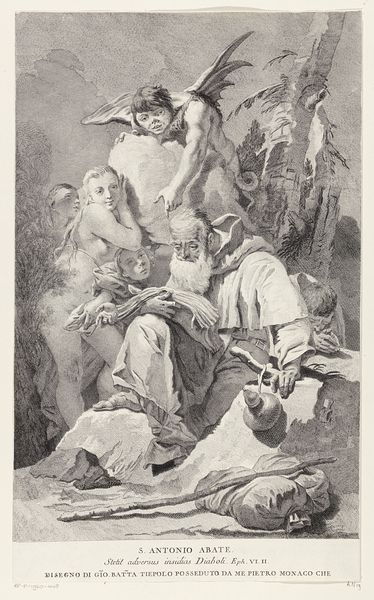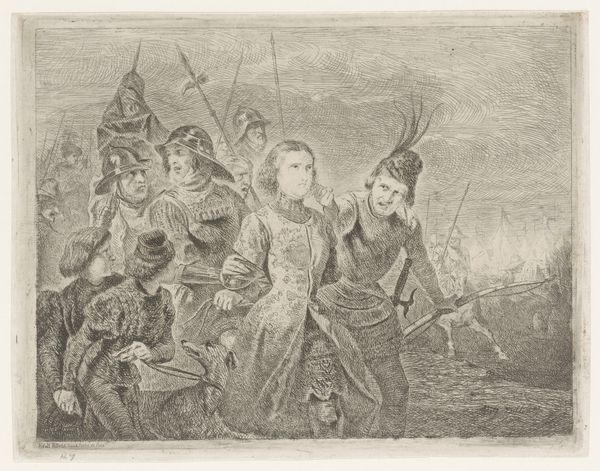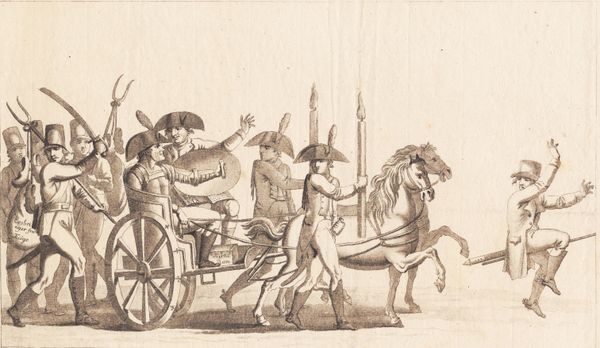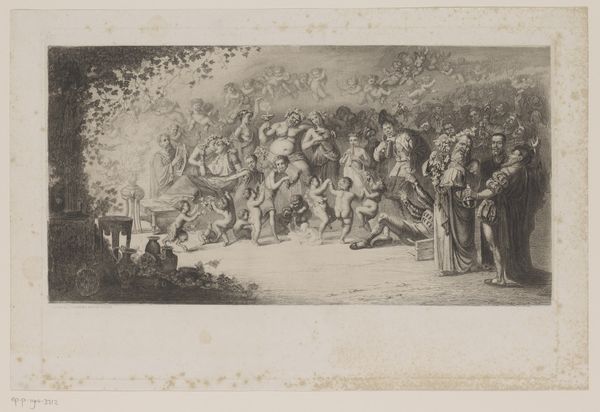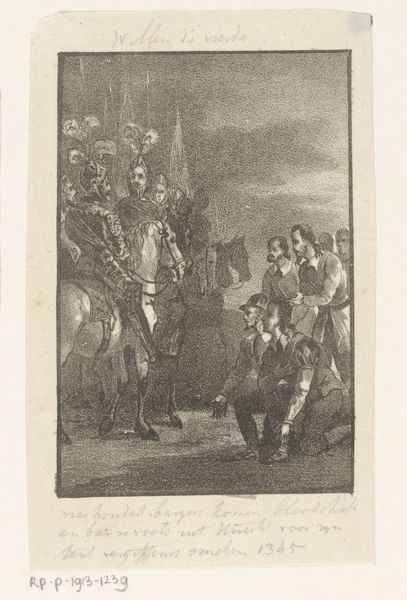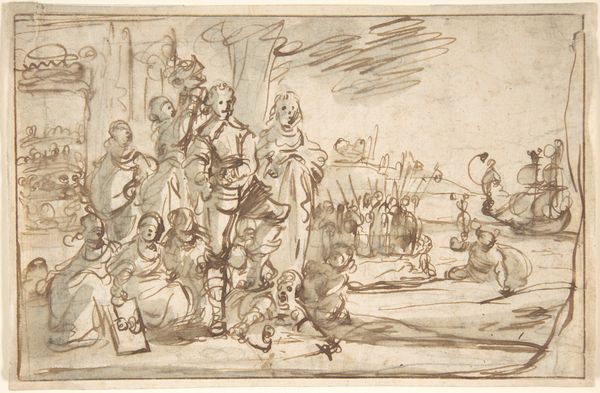
Figurlig scene med en hellig, hornet mand blandt romerske soldater 1789
0:00
0:00
drawing, pencil
#
drawing
#
fantasy-art
#
figuration
#
pencil
#
history-painting
Dimensions: 221 mm (height) x 334 mm (width) (bladmaal)
Curator: Let’s consider this fascinating pencil drawing, "Figural Scene with a Saintly, Horned Man among Roman Soldiers," created in 1789 by Erik Pauelsen. What catches your eye? Editor: Well, immediately the monochromatic palette establishes a stark, almost theatrical atmosphere. The lines are quite expressive, conveying a real sense of tension within the composition. What's going on? Curator: Pauelsen, during his time, grappled with themes of power, religion, and social order, often leaning towards the fantastical or historically reimagined scenarios. This work can be seen as part of the broader late 18th-century artistic movement exploring folklore and alternative historical narratives, reflecting unease about established societal structures. Editor: The "horned man" really throws me. His garments are loose, draping well—yet juxtaposed with what appear to be very rigid and precise Roman uniforms. This contrast of soft versus structured is jarring, and yet the composition draws the eye from one to the other. It establishes a striking dialogue between opposing forms. Curator: Precisely! The horned figure could symbolize resistance, paganism, or even marginalized knowledge confronting the brute force of Roman authority. Given Pauelsen’s historical context, he may have been commenting on contemporary power dynamics. The drawing appears in the collection of SMK—Statens Museum for Kunst today. Editor: It makes me think about the weight of the "pencil" itself—its immediacy lends an urgency to the subject, don't you think? As though the artist witnessed this spectacle and rapidly, deftly, translated it to the paper? It creates that illusion through its tonal quality and shading. Curator: And note how Pauelsen leaves so much of the background relatively unformed. The drawing's impact lies in that starkness, directing our focus entirely to this central clash, the confrontation of beliefs and social orders, something highly pertinent in an era of revolution and philosophical questioning. Editor: Agreed, it’s the sparseness of the piece combined with that high contrast in forms, almost clashing geometries, that lend to that impact. The image persists with a raw, somewhat confrontational energy, still effective so many years on. Curator: For me, it’s a testament to how artists use history, or their own interpretation of it, to reflect contemporary concerns. Editor: And for me, the powerful juxtaposition of formal qualities elevates Pauelsen’s subject to the realm of timeless allegory.
Comments
No comments
Be the first to comment and join the conversation on the ultimate creative platform.
